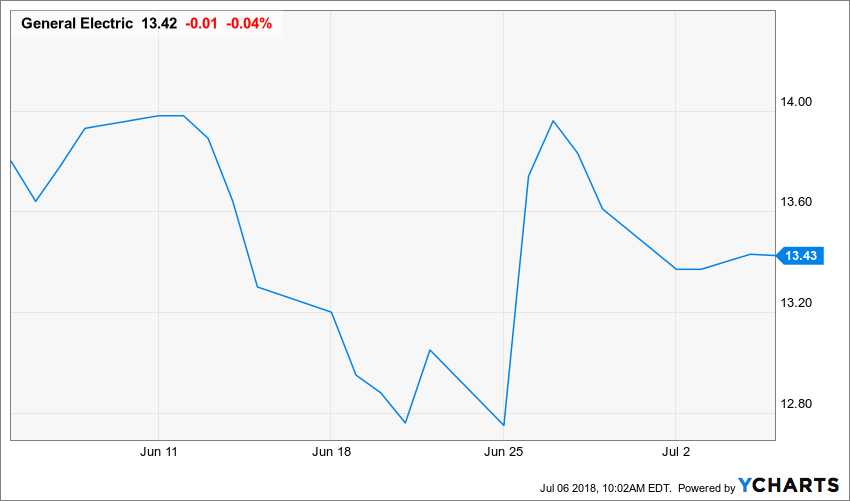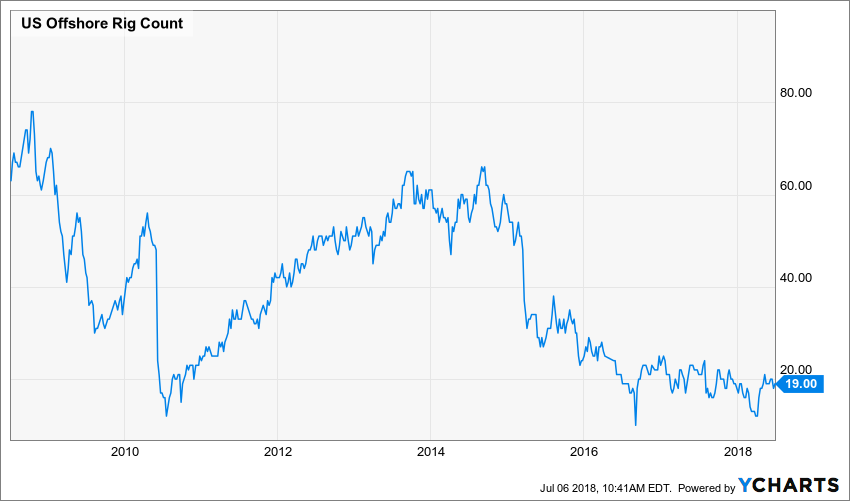
Figure 1. Source: GE
Framework Investing subscribers know that I have plenty of egg on my face from my statements about GE:
- I did not think the firm would need to cut its dividend. It did.
- I did not think that the conditions in the Power business (whose main products are the large gas turbines used to generate grid power) were as bad as they were. We are now clearly in the midst of a once-in-a-generation (pun intended) downturn.
- I thought the long-term insurance business was uninspiring. I didn’t foresee it having to take a $15 billion charge.
Listening to GE’s CEO Flannery’s late-June conference call about the big restructuring of a company that I have called the symbol of American capitalism, I felt cautiously optimistic. Flannery’s plan entails raising money by selling a fifth of its industry-leading Healthcare business (and spinning off the rest to current shareholders) and by exiting its stake in oil and gas services firm, Baker Hughes BHGE, as well as generally pushing managerial control closer to the business units and away from GE’s Boston headquarters.
In total, the plan will reduce overhead to increase productive efficiency and generate a huge amount of cash that it can use to pay down the debt and pension obligations that seemed so outsized after it had shed its GE Capital business.
The market responded very positively to the announcement, with its stock price soaring by nearly 10% over two trading days after the conference call (though it’s pulled back again since). A wave of articles with titles like “Now’s the Time to Buy GE” flooded into the blogosphere.

Figure 2. Source: YCharts. Guess what day the restructuring was announced
On the heels of this announcement, a Framework member recently wrote me an email asking if I thought selling put options on GE – in a transaction that I call a “bond replacement” investment – was sensible at these levels.
I answered no.
My reticence stems from two major unknowns that make it, in my opinion, very difficult to determine the fair value range of the company. One of these is a “bookkeeping” uncertainty, the other is an economic one. Both are serious. Both need to be answered before investing (more) in my opinion.
Bookkeeping
This issue has to do with a mismatch in the size of the company’s asset base with its capital base. As the company sold off its GE Capital and other businesses, it bought back shares so that the number of shares outstanding – what I’m calling the capital base – would be right-sized to the cash flow producing assets it owns.
In 2017, as the Power business was falling apart, it stopped buying back shares and still has more shares outstanding than its previous targets.
With the late-June restructuring announcement, it is clear that GE’s asset base will again shrink by a material amount. However, how soon and how much the capital base will shrink is unknown and probably unknowable since it depends on the price at which it can sell its business units.
Companies are valued on the basis of how much cash they can create for each of the shareholders. A company that is generating $10 of cash flow might be worth $120 in total, but the value per share will change depending on the number of shares claiming the right to receive part of that $10 in value.
Economics
The last time the market for gas turbines was so weak was in the early-2000s. The market peaked in 2000 and bottomed in 2002; it wasn’t until 2007 that the market again hit its stride (thanks to industrial demand mostly), and even then, demand was not as high as in 2000.
2018 turbine demand is at a 2002-style nadir. Investors expecting a five-year bounce-back, though, may not enjoy as sharp of one as investors did in the 2003-2007 timeframe due to structural changes in the two main gas turbine markets: utilities and industrial concerns.
Utilities – which has represented a market six to eight times larger than that of industrials – are increasingly shifting energy production toward renewable sources – solar and wind. We doubt that all of the demand will be met by alternative sources in the next 20-50 years, but the shift toward alternatives – especially in high-demand areas like the Middle East – will shift marginal demand for gas turbines downward.
The Industrials market has largely been driven by oil and gas producers, and especially by the need to generate power for offshore rigs. Even though oil prices have headed back upward since the 2015 lows, they are still not high enough to generate demand for deep offshore projects, as you can see from the rig count chart below.

Figure 3. Source: YCharts
With lower demand from offshore oil and gas producers for industrial-use gas turbines, again, GE’s Power business looks as though it may not experience a strong bounce-back.
Any investor in GE should be focusing on these two questions – what steps will GE take to right-size its capital base to match its new asset base, and to what extent will structural changes in the gas turbine market hold back GE’s cyclical rebound.
These are the two questions on which my research time will be most focused.
